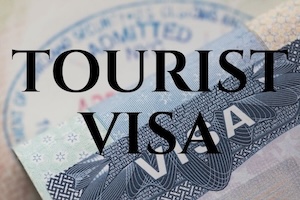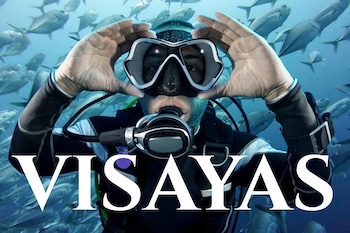
Visa Classes & Pathways for Long-Term Stays in the Philippines
For those planning to live, work, or study in the Philippines long-term, there are many visa options available depending on your purpose. For example, work visas are typically tied to local employment or special projects and require coordination with an employer and the Department of Labor. Student visas are intended for those enrolling in a Philippine university or training program and come with specific enrollment and reporting requirements.
Family-based visas may be available for those married to Filipino citizens or supporting dependent children, often leading to residency. And for special cases—such as missionaries, investors, or international agency staff—there are permits and entry visas tailored to their unique roles.
Now, let’s take a closer look at each of these visa options in detail—what they involve, who they’re for, and how to get started with the application process. Whether you're considering employment, study, family life, or a specialized role, understanding the requirements up front can save time and help you choose the most suitable path.
We’ve already covered the SRRVisa and the Tourist Visa in detail — Two of the most common options for retirees, expats, and long-stay visitors. If you’re not familiar with them, you can explore those articles here.

Understand visa lengths, extensions, and key rules for long-stay visitors to the Philippines.

Explore the SRRV, a long-term visa designed for retirees seeking permanent residency and flexible entry to the Philippines.

Full List of Visa Types Available in the Philippines
The Philippine visa system includes a wide range of options designed to accommodate different types of visitors and residents—whether you're here to retire, work, study, invest, or reunite with family. Below is a full list of visa types currently available to foreign nationals.
| Visa Type | Category | Description |
|---|---|---|
| 9(a) Tourist Visa | Temporary Visitor | For short-term tourism or business visits. Can be extended up to 36 months for many nationalities. |
| SRRV (Special Resident Retiree’s Visa) | Retirement | Long-term residency for retirees with a pension or time deposit. Includes multiple-entry and permit exemptions. |
| 9(g) Pre-arranged Employment Visa | Work | Issued to foreign nationals with local employment. Requires an Alien Employment Permit (AEP) from DOLE. |
| 9(f) Student Visa | Study | For foreigners accepted into accredited schools. Requires school acceptance, financial proof, and BI clearance. |
| 13(a) Non-Quota Immigrant Visa | Family | For foreign spouses of Filipino citizens. Leads to permanent residency with annual reporting requirements. |
| 13(b) to 13(g) Series | Family & Other Immigrants | Visas for dependent children, returning residents, or natural-born Filipinos who lost citizenship. |
| 47(a)(2) Special Non-Immigrant Visa | Special Purpose | Granted to employees of government-endorsed entities or investment zones. Flexible and employer-sponsored. |
| 9(d) Treaty Trader/Investor Visa | Investment | For citizens of countries with trade treaties. Requires substantial trade or investment activity. |
| Missionary Visa (9(g) or 47(a)(2)) | Religious Work | Issued to religious missionaries or workers affiliated with registered faith-based organizations. |
| Quota Immigrant Visa (13) | Quota-Based Immigration | Limited annual issue for nationals of countries with reciprocal agreements. Requires strong financial proof. |
| SIRV (Special Investor’s Resident Visa) | Investment | Grants residency to those investing USD 75,000+ in approved Philippine businesses or projects. |
| SVEG (Special Visa for Employment Generation) | Investment | For foreigners employing 10+ Filipino workers. Grants indefinite stay without needing a separate work visa. |
| Temporary Resident Visa (TRV) | Marriage/Non-Quota | For spouses from countries not eligible for 13(a). Allows long-term stay but not full permanent residency. |
| Balikbayan Privilege | Family/Former Filipino | 1-year visa-free entry for former Filipinos and their families. Not a visa, but a special entry right on arrival. |
| 9(b) Transit Visa | Transit | For travelers passing through the Philippines within 72 hours en route to a third country. |
| 9(c) Seaman Visa | Maritime Work | Granted to foreign crew members on ships docking at Philippine ports. Requires maritime documentation. |
| 9(e) Foreign Government Official Visa | Diplomatic | Issued to ambassadors, consular staff, and accredited foreign government officials. |
| EO 226 Visa | Investment/Executive | For executives and managers of companies registered with the Board of Investments (BOI). |
| Refugee/Stateless Person Visa | Humanitarian | Rarely issued. Granted under UNHCR supervision for refugees and stateless individuals. |
All visa information above is provided for general guidance only and reflects official sources as of mid-2025. Actual requirements, processing times, and eligibility may vary based on personal circumstances and changes in immigration policy. Always verify details with the Philippine Bureau of Immigration or an accredited visa consultant before applying.
While this table gives a broad overview, not all visas are relevant to long-stay expats or retirees. In the sections below, we’ll focus on the most practical options for those looking to live, work, or settle in the Philippines for an extended period—such as work visas, student visas, family-based options, and special categories like investment.

Visa Classes for Long-Term Stays
Philippine visas serve specific purposes—such as working, studying, joining a spouse, investing, or returning as a former citizen. Each visa class comes with distinct requirements and limitations. Below, we explore the most relevant visa classes for expats, and long-stay visitors.
9(g) Pre-arranged Employment Visa
This visa is issued to foreigners hired by Philippine-based companies. It requires a valid job offer and an Alien Employment Permit (AEP) from the Department of Labor and Employment (DOLE). The employer typically sponsors the visa application, and the visa allows for residency while working under that specific contract.
9(f) Student Visa
Foreigners accepted into accredited Philippine schools can apply for a 9(f) Student Visa. The process involves securing a Certificate of Acceptance from the institution, showing proof of financial means, and clearance from the Bureau of Immigration. While not a path to residency, it enables extended legal stay for the duration of studies.
13(a) Non-Quota Immigrant Visa
This visa is available to foreign nationals legally married to Filipino citizens. It allows for permanent residency after an initial one-year probationary period. The application requires a valid marriage certificate, proof of genuine cohabitation, and an NBI clearance.
SIRV (Special Investor’s Resident Visa)
The SIRV grants residency to foreigners who invest at least USD 75,000 in qualified Philippine businesses or securities. It’s designed for individuals looking to contribute to the economy while gaining long-term stay privileges. Applicants must meet financial documentation and investment tracking requirements.
SVEG (Special Visa for Employment Generation)
This visa is available to foreign nationals who employ at least 10 full-time Filipino workers in a lawful business. It grants indefinite stay without requiring a separate work visa and is ideal for expat entrepreneurs running local enterprises. Proof of employment and business legitimacy is required.
Temporary Resident Visa (TRV)
The TRV is intended for foreign spouses of Filipino citizens who come from countries that do not qualify for the 13(a) visa. It offers long-term stay but does not automatically grant permanent residency. The application process is similar to 13(a) but may involve additional scrutiny.
Balikbayan Privilege
This is a special entry right, not a formal visa, granted to former Filipino citizens and their immediate family members. It allows visa-free entry and a stay of up to one year. It’s a convenient option for long visits or initial stays while exploring other residency routes.
The table below summarizes the key requirements and features of each visa class covered above—helping you compare options based on sponsorship, residency potential, exit permits, and more.
| Visa Type | ACR I-Card Required | ACR I-Card Renewal | ECC Required to Exit | Philippine Sponsor Needed | Proof of Income/Investment | Path to Permanent Residency | Typical Duration |
|---|---|---|---|---|---|---|---|
| 9(g) Employment Visa | Yes | Annually | Yes, if stay ≥ 6 months | Yes (Employer) | Not required | No | 1–3 years, renewable |
| 9(f) Student Visa | Yes | Annually | Yes, if stay ≥ 6 months | Yes (School) | Proof of financial means | No | Valid for course duration |
| 13(a) Spousal Visa | Yes | Every 5 years; annual report required | Yes, if stay ≥ 6 months | Yes (Spouse) | Not required | Yes | Permanent after 1-year probation |
| SIRV | Yes | Annually | Yes, if stay ≥ 6 months | No (Investment-based) | USD 75,000+ Investment | Yes | Valid while investment held |
| SVEG | Yes | Annually | Yes, if stay ≥ 6 months | Yes (Business) | Business employing 10+ Filipinos | Yes | Indefinite |
| Temporary Resident Visa (TRV) | Yes | Annually | Yes, if stay ≥ 6 months | Yes (Spouse) | Not required | No | Long-term, renewable |
| Balikbayan Privilege | No | Not applicable | No, if stay ≤ 1 year and no visa conversion | No | Not required | No | 1 year (visa-free) |
All visa information above is provided for general guidance only and reflects official sources as of mid-2025. Actual requirements, processing times, and eligibility may vary based on personal circumstances and changes in immigration policy. Always verify details with the Philippine Bureau of Immigration or an accredited visa consultant before applying.

Final Thoughts on Visa Pathways
Philippine visa classes exist to meet specific requirements—whether for work, study, family, investment, or returning as a former citizen. Your personal situation determines which visa applies. It’s not about preference, but eligibility based on purpose.
What you can do is understand your position and plan around it. Know what your visa allows—and what it doesn’t. Recognize when it’s time to shift categories, update documents, or apply for residency through the proper channel. These decisions matter more than just picking a visa from a list.
The Philippines offers a wide range of legal pathways. Most foreigners will find one that fits—if they’re clear about their intentions and willing to meet the requirements. That’s the real key to building a stable, long-term life here.

Helpful Next Steps
Understanding your visa options is just one of the key starting points when planning a move to the Philippines. For more practical insights, explore our full collection of Living in the Philippines articles.
You can also take a deeper look into Filipino Society to better understand the people and culture — or perhaps you’re considering diving as part of your lifestyle here. That’s covered too.
Living in the Philippines

Our in-depth articles helping you navigate daily life in the Philippines with clarity and confidence.
Filipino Society

From pre-colonial kingdoms to independence, explore the key events that shaped the Philippine nation.

What culture really means in the Philippines — not just traditions, but how people live, believe, and connect.

See how Philippine healthcare has evolved — from colonial hospitals to PhilHealth and the challenges people face today.
Dive the Visayas

The Visayas offers world-class diving — find out where to start.

Light and colour underwater — what happens, and how to film it right.

A local guide to diving Cabilao Island — how to get there, what to expect, and why it’s worth the trip.
